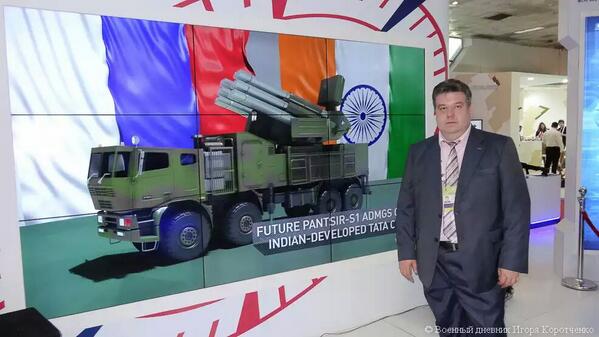India's Defense Spending Boost Won't Be As High, Sources Say
NEW DELHI — Despite calls by India’s new defense minister for a 20 percent boost in spending, sources in the Foreign Ministry say that number will more likely be 10 percent due to New Delhi’s financial conditions.
In a note to the Finance Ministry last week, the Defence Ministry sought a $7.5 billion jump over the existing allocation of $35 billion, announced by the outgoing United Progressive Alliance government in February.
The outgoing government allocated $14.93 billion in the Capital Head for fresh weapons and equipment. An MoD source said the bulk of the allocations in the Capital Head are used for paying for past contracts, leaving very little money for buying new weaponry and equipment.
Also, under Indian procurement norms, the government pays for 10 percent of a contract up front and the rest is spread over the following years. Since India needs to finalize $20 billion in contracts in the next year, it must spend $2 billion in additional money to cover its upfront costs.
“There is a need for substantial increase in the defense budget to cater for both committed liabilities and for new schemes. The pressure on the defense budget has been acute in recent times, to the extent that around 97 percent of the capital acquisition budget was [due to] committed liabilities, leaving very little for the new contracts,” said Laxman Kumar Behera, research fellow at the Institute of Defense Studies and Analyses.
The MoD needs to finalize contracts worth $20 billion in the 2014-2015 timeframe, including:
■$12 billion for the Medium Multirole Combat Aircraft (MMRCA) program, with Dassault as the preferred bidder.
■$1.5 billion for eight mine countermeasures ships from Kangnam Corp., South Korea.
■$1.2 billion for six Airbus A330 tankers.
■$1.1 billion for 22 Boeing Apache attack helicopters.
■$1 billion for 197 light utility helicopters.
■$833 million for 15 Boeing Chinook heavy lift helicopters.
■$600 million for light howitzer guns from BAE Systems.
■$350 million for 1,418 Israeli-made thermal imaging sights for T-72 tanks.
■$250 million for 262 Barak missiles from Israel Aerospace Industries.
■$200 million for 98 Black Shark torpedoes from WASS.
A Navy officer said India needs to sharply increase its budget spending to match the increased spending by China, which has an annual defense budget of $132 billion, nearly four times that of India. The officer said the optimum level of defense spending should be over 3 percent of India’s gross domestic product (GDP), compared to its current level of less than 2 percent.
“By a rough yardstick, India needs to spend approximately 2-2.5 percent of GDP consistently on defense so that it is able to stay at par with the modernization curve,” said retired Army Brig. Gen. Rahul Bhonsle, now a defense analyst. “In the last five budget years 2010-11 onwards, including the interim budget for 2014-15, [spending] has been below 2 percent of the GDP. This means for the next five years, there is a need to spend on the higher side, that is 2.5 percent of the GDP, and then a review could be carried out.”
However, Amit Cowshish, retired MoD financial adviser and defense analyst, said there is no “optimum” level of defense spending.
“Some people do advocate that [the] defense budget should be pegged at 3 percent of the GDP, but there is no empirical study to establish that this would be the ideal level of funding,” Cowshish said. “Since there is no ideal/optimum level of funding, there is no way of saying what the ‘lag’ is.”
However, MoD is unlikely to get the increased funds as demanded, given the tight fiscal health of the country, forcing the MoD to rejig the purchase and even put some projects on hold, the MoD source said.
“Some smart contract negotiations will have to be undertaken to delay a few contracts such as the heavy lift helicopters, pay lower contracting margins to large projects as the Rafale [MMRCA] and cut back on projects as the indigenous aircraft carrier,” Bhonsle said. “However, any cutback in artillery guns and submarine procurements are not recommended.” ■
Email: vraghuvanshi@defensenews.com.
India's Defense Spending Boost Won't Be As High, Sources Say | Defense News | defensenews.com













